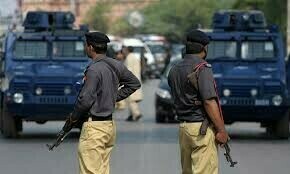BAMIYAN: Trudging halfway up a jagged goat trail, guide Mohammad Ibrahim extolled the panoramic view ─ a vast, ancient landscape of russet-hued cliffs that is on the frontline of Afghan efforts to jumpstart warzone tourism.
Bamiyan ─ famous for empty hillside niches that once sheltered giant Buddha statues that were blown up by the Taliban ─ is a rare oasis of tranquility that has largely been spared the wrenching conflict that afflicts the rest of Afghanistan.
Once a caravan stop along the fabled Silk Road, the central Afghan city was recently named this year's cultural capital of South Asia, igniting hopes of restoring its place on the global tourism map.
One obstacle, however, remains: Bamiyan is hemmed in by war.
Read: Bamiyan haunted by Taliban massacre
Figuring out how to get to the ancient city ─ endowed with stunning landscapes but wedged between volatile provinces ─ itself is a challenge.
But that doesn't stop Ibrahim, head of the local tourism association with a penchant for Indiana Jones-style straw hats, from making his sales pitch.
"Bamiyan has caves with the world's oldest oil paintings, the country's first national park and during winter it's home to Afghanistan's only ski slopes," he said, sounding like a walking tourism brochure.
Also read: Afghanistan's Bamiyan hopes to attract skiers
Hiking up to the ruined ramparts of Shahr-e-Gholghola ─ the City of Screams, which was destroyed by Genghis Khan in the 13th century ─ Ibrahim stopped to catch his breath and picked up a spent bullet shell from the ground, one of many Soviet-era casings that litter the windswept trail overlooking the sandstone cliffs and snow-clad pyramids of the Hindu Kush range.
"Bamiyan is the envy of Afghanistan ─ it has peace," he said.
Hippie trail
Pre-civil war days are a subject of whispered nostalgia in Bamiyan, when it wielded control over strategic mountain passes connecting trade routes from India, China and Persia and the local markets swarmed with stoned backpackers hopping overland on the so-called "hippie trail".
It has failed to revive the heyday of tourism after decades of war, including the Taliban's 1996-2001 reign when they destroyed two massive Buddha statues carved into sandstone cliffs, labelling them an affront to Islam ─ an act globally condemned as "cultural terrorism".
Also read: Osama’s fingerprints seen on ruins of Bamiyan Buddhas
Reliable statistics are hard to come by but officials admit that the number of foreign tourists has fallen off a cliff in recent post-Taliban years as pessimism abounds about the state of Afghanistan, trapped in a quagmire of escalating violence.
But in an effort to lure tourists, especially from the sub-continent, Bamiyan was last month inaugurated as the South Asia Association for Regional Cooperation (SAARC) cultural capital for 2015 ─ a move welcomed by local hoteliers and shopkeepers, though few are optimistic.
Bamiyan's single-runway airport can only accommodate small aircraft, with just one commercial airline operating thrice weekly flights from Kabul.
And both land routes connecting it to the capital ─ through the mountainous Ghorband valley in neighbouring Parwan province and Wardak province in the south ─ can be deadly.
Travellers who cannot afford the $200 round-trip air fare say Taliban militants harass them with impunity.
"If you are an Afghan travelling by road, wear a ragged tunic, abandon all government ID and say your prayer," quipped Umaidullah Azad, a tourist in Band-e Amir, widely known as "Afghanistan's Grand Canyon" for its azure lakes and rolling limestone cliffs.
"If the Taliban flag you down, you have a good chance of surviving if you look like a country bumpkin. But no chance if you have government or foreign connections," said Azad, 24, a telecom official who recently made the perilous journey from Kabul.
Good security, bad economy
Mohammad Sajad Mohseni, a prominent cleric recognised as the "Facebook mullah" for his connections with the Afghan youth on social media, was in Bamiyan when the Taliban pummelled the Buddha statues.
When days of shooting and cannon fire failed to destroy them, the Taliban drilled holes into the idols and filled them up with explosives, he recalled.
"What they blew up weren't just stones. They were our history," he said. "In 2001, US warplanes forced the Taliban to go on the run, hide in caves.Within 13 years, they have spread into almost every city, every village."
But few expect a spillover of the insurgency into Bamiyan, dominated by ethnic Hazaras, Asiatic descendants of Genghis Khan who suffered extensively under the Taliban.
Unmoored from turmoil, the quiet in Bamiyan is broken only by the echoes of muezzins and the occasional slamming of a rocket in neighbouring towns.
Security men bristling with weapons are few, a rare sight in a country synonymous with snipers, checkpoints and suicide bombings.
A common refrain among local residents, though, is that "security is good but economy is bad".
The moribund economy offers few employment options other than potato farming.
A large replica of a candle lantern adorns the city square ─ a mocking symbol erected by activists to highlight that Bamiyan has no power grid, with students forced to study under solar-lit street lamps.
Shops selling trinkets and rugs emblazoned with images of buzkashi ─ a rugged equestrian game ─ admit living a slow death until tourism blossoms.
"Tourists are unlikely to come to Bamiyan," said antiques shopkeeper Ghulam Ali, "until the war outside Bamiyan ends."























































